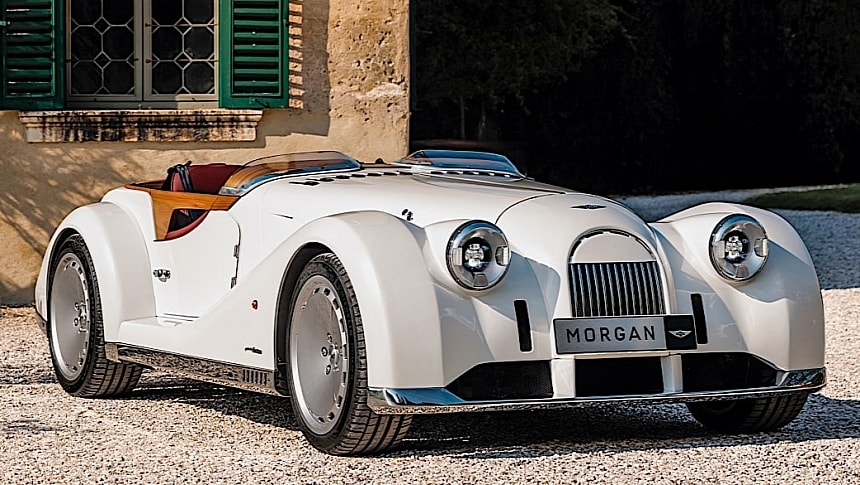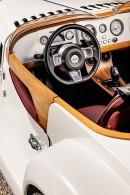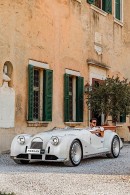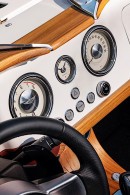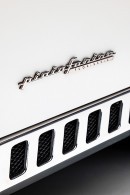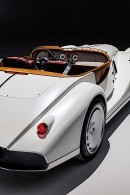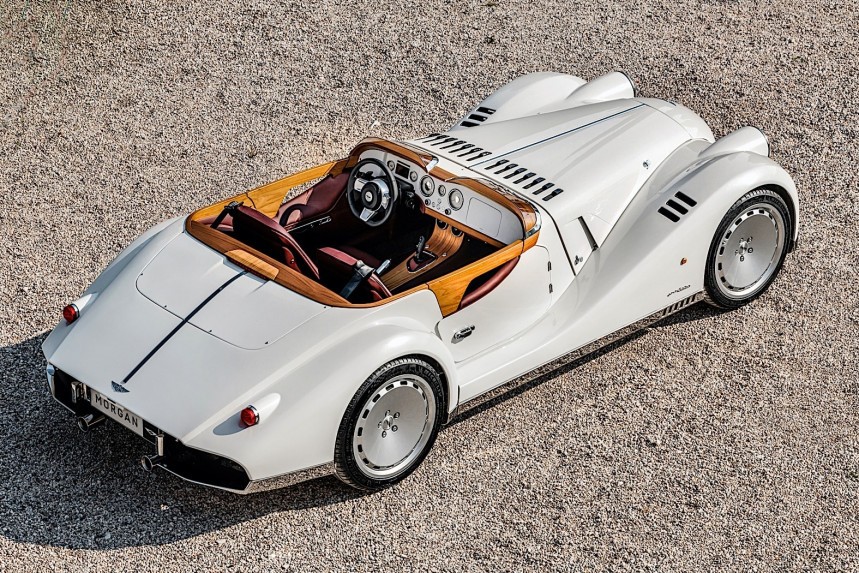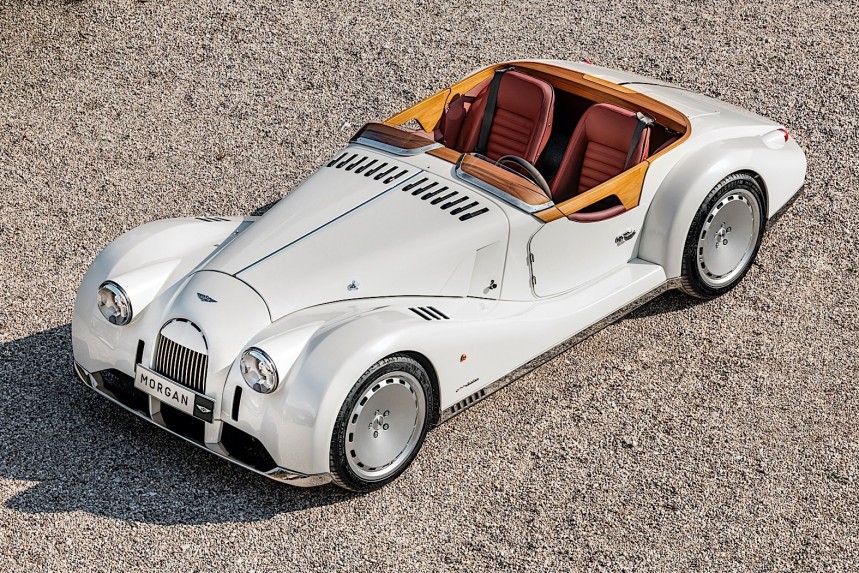Coachbuilders have always been perceived as the Michelin-star chefs of the automobile world. Established at first because of a need people had decades ago, each of these niche carmakers is currently cooking motorized dishes so delicious people will talk about them for ages. And when two of them, some of the oldest in the world, join hands for a project, excitement levels for all those with a passion for cars go through the roof.
No matter how marginally interested you are in the auto industry or where you live on this Earth, you probably came across the names Morgan Motor Company and Pininfarina. The former traces its roots to early 1900s Britain, while the latter came to be in Italy in the 1930s.
Both these companies are still around, rolling out their design chambers vehicles meant to make the world gasp. Morgan has in its portfolio timeless beauties the likes of the Plus Six, while Pininfarina is the mastermind behind the purely genius Battista.
And now by their powers combined comes into the world something called the Midsummer, a visual blend between the lines the cars of the 1930s had to offer and the sharpness of a turbocharged, modern-day vehicle.
We'll start our Midsummer journey of discovery with the car's design for the simple reason that this is, without a doubt, one of the most beautiful cars to have ever been made. In my book, at least…
The special project car has been created as per the two companies that partnered on the project "in recognition of the heyday of European barchetta designs." More specifically, that would be the vehicles Pininfarina used to make in its early years.
Technically speaking, the Midsummer remains at its core a Morgan. It was built on the British company's CX-generation bonded aluminum platform, used for the first time back in 2019 on the Plus Six.
An evolved Morgan body was added on top of that. It boasts the classic front end, with the signature round headlights flanking the horseshoe radiator grille – although familiar, this particular design is unique to the Midsummer.
When viewed from the side, the convoluted wings Morgan has gotten us used to come into view rising steadily from about halfway the length of the car to hug the front wheels completely.
Speaking of wheels, these bits are unlike anything you've seen before. That's because they have been specifically designed for this particular car. 19 inches in diameter, they are so light the car probably doesn't even know they are there: 22 pounds (10 kg), almost seven pounds (three kg) less than the wheels used on the Plus Six. Michelin Pilot Sport tires wrap around all four of them.
At the rear the Midsummer is a true beaut. Its relatively long behind, adorned solely by a pair of lights stuck inside dedicated pods, is also meant to be a nod to 1930s and 1940s Pininfarina designs.
The exposed interior is a perfect example of what experience in making luxury cars means. Visible wooden structures blend and twist their way around the two-seat layout, chased by elements in ash, aluminum, and leather.
It's not uncommon for Morgan to use wood during its builds, but the material was, until now, mostly spread out to form elements of the body itself, relegated to the role of buck to hand-form the aluminum. Here, however, wood takes a more prominent role, helping create the telltale Morgan shoulder line and to highlight the perimeter of the interior.
The particular wood used in the Midsummer is tea, spread out in panels that are no more than 0.6 mm thick. In all, there are nine teak sections on the car, including on the tops of the dashboard and doors.
Back to the rest of the interior, the Midsummer tries as best it can to stay true to its vintage look, and that means the dials, exclusive to this model, are analog. In front of them sits a steering wheel featuring a solid forged aluminum center.
There is a modern piece of equipment in there, the Sennheiser audio system, but it doesn't stand out as being out of place.
As for the mechanical bits, the good news is that the Midsummer is not electric, but will be powered by a BMW-sourced six-cylinder turbocharged engine tied to an eight-speed automatic transmission that will probably develop, just like in the Plus Six, 335 hp.
That may not seem like all that much today, but considering how the Midsummer targets a dry weight of 2,200 pounds (1,000 kg), the perspective changes.
To make sure everybody understands this is a car designed with help from Pininfarina, the Italians did something they've never done before. Instead of fitting the usual Design by Pininfarina badge on the bodywork, this car proudly wears one that reads Pininfarina Fuoriserie, meaning it's a rare, out-of-series model.
How rare? Just 50 of these beauties will ever see daylight, with production scheduled to begin later this year and end in 2025. Pricing will probably never be a matter for public discussion, and will only be revealed to the people who will actually buy the Midsummer. The rest of us will learn more about teh car soon, as its first public outing is expected to take place in July, at the 2024 Goodwood Festival of Speed.
Both these companies are still around, rolling out their design chambers vehicles meant to make the world gasp. Morgan has in its portfolio timeless beauties the likes of the Plus Six, while Pininfarina is the mastermind behind the purely genius Battista.
And now by their powers combined comes into the world something called the Midsummer, a visual blend between the lines the cars of the 1930s had to offer and the sharpness of a turbocharged, modern-day vehicle.
We'll start our Midsummer journey of discovery with the car's design for the simple reason that this is, without a doubt, one of the most beautiful cars to have ever been made. In my book, at least…
The special project car has been created as per the two companies that partnered on the project "in recognition of the heyday of European barchetta designs." More specifically, that would be the vehicles Pininfarina used to make in its early years.
An evolved Morgan body was added on top of that. It boasts the classic front end, with the signature round headlights flanking the horseshoe radiator grille – although familiar, this particular design is unique to the Midsummer.
When viewed from the side, the convoluted wings Morgan has gotten us used to come into view rising steadily from about halfway the length of the car to hug the front wheels completely.
Speaking of wheels, these bits are unlike anything you've seen before. That's because they have been specifically designed for this particular car. 19 inches in diameter, they are so light the car probably doesn't even know they are there: 22 pounds (10 kg), almost seven pounds (three kg) less than the wheels used on the Plus Six. Michelin Pilot Sport tires wrap around all four of them.
At the rear the Midsummer is a true beaut. Its relatively long behind, adorned solely by a pair of lights stuck inside dedicated pods, is also meant to be a nod to 1930s and 1940s Pininfarina designs.
The exposed interior is a perfect example of what experience in making luxury cars means. Visible wooden structures blend and twist their way around the two-seat layout, chased by elements in ash, aluminum, and leather.
It's not uncommon for Morgan to use wood during its builds, but the material was, until now, mostly spread out to form elements of the body itself, relegated to the role of buck to hand-form the aluminum. Here, however, wood takes a more prominent role, helping create the telltale Morgan shoulder line and to highlight the perimeter of the interior.
Back to the rest of the interior, the Midsummer tries as best it can to stay true to its vintage look, and that means the dials, exclusive to this model, are analog. In front of them sits a steering wheel featuring a solid forged aluminum center.
There is a modern piece of equipment in there, the Sennheiser audio system, but it doesn't stand out as being out of place.
As for the mechanical bits, the good news is that the Midsummer is not electric, but will be powered by a BMW-sourced six-cylinder turbocharged engine tied to an eight-speed automatic transmission that will probably develop, just like in the Plus Six, 335 hp.
That may not seem like all that much today, but considering how the Midsummer targets a dry weight of 2,200 pounds (1,000 kg), the perspective changes.
To make sure everybody understands this is a car designed with help from Pininfarina, the Italians did something they've never done before. Instead of fitting the usual Design by Pininfarina badge on the bodywork, this car proudly wears one that reads Pininfarina Fuoriserie, meaning it's a rare, out-of-series model.
How rare? Just 50 of these beauties will ever see daylight, with production scheduled to begin later this year and end in 2025. Pricing will probably never be a matter for public discussion, and will only be revealed to the people who will actually buy the Midsummer. The rest of us will learn more about teh car soon, as its first public outing is expected to take place in July, at the 2024 Goodwood Festival of Speed.
